
Overview
You might be wondering how to create a process template Word document that really works for your organization. Well, this article lays out a structured approach that emphasizes the importance of standardization—something that can really boost efficiency and clarity. So, what are the key steps?
- First, it's all about defining clear objectives.
- Then, gather feedback from stakeholders to ensure everyone’s on the same page.
- Organizing the document into sections is crucial, and don’t forget to incorporate visual aids!
These elements work together to enhance understanding and cut down on those pesky operational inefficiencies. Now, let’s dive into how you can make this process even smoother!
Key Highlights:
- Process templates standardise documentation, improving consistency and clarity across teams.
- Organisations using process templates can reduce contract management time by up to 50%.
- Defining clear objectives for workflows aligns with organisational needs and enhances efficiency.
- Gathering stakeholder feedback is crucial for creating effective process templates.
- A well-structured document includes sections like introduction, objectives, roles, and step-by-step instructions.
- Improved record-keeping can reduce financial losses and enhance productivity.
- Visual aids such as flowcharts and diagrams can clarify complex procedures.
- Regular reviews and updates of process templates foster a culture of continuous improvement.
- Companies that prioritise record-keeping see better operational consistency and adaptability.
Introduction
Creating a process template in Word can be a real game-changer for organizations aiming for clarity and efficiency in their workflows. You might be wondering how standardizing documentation could help. Well, by doing so, teams can significantly cut down on time spent on repetitive tasks—some businesses have even reported a whopping 50% decrease in contract management activities!
But here’s the challenge: how can organizations make sure their process templates are not just effective but also flexible enough to adapt to changing needs?
Now, let’s dive into seven essential steps to create a robust process template in Word, giving you the tools to boost your operational efficiency and foster a culture of continuous improvement.
Understand the Purpose of a Process Template
You might be wondering what a template really does. Well, it serves as a handy process template word document for documenting workflows, thereby making everything more consistent and clear across your organization. This organized approach helps teams understand their roles and responsibilities, which means less time spent on those pesky repetitive record-keeping tasks. By embracing standardized documentation, many organizations see a boost in productivity, as companies often report that utilizing a process template word document helps them slash their time on contract management activities by as much as 50%!
Now, let’s dive into why defining a clear objective for your workflow framework is so crucial. It ensures that everything aligns with your organization’s specific needs, making knowledge sharing smoother and reducing the chances of errors. As a result, businesses can streamline their operations, enhance compliance, and cultivate a culture of efficiency. This ultimately leads to better performance and scalability. So, are you ready to explore how templates can transform your workflow?
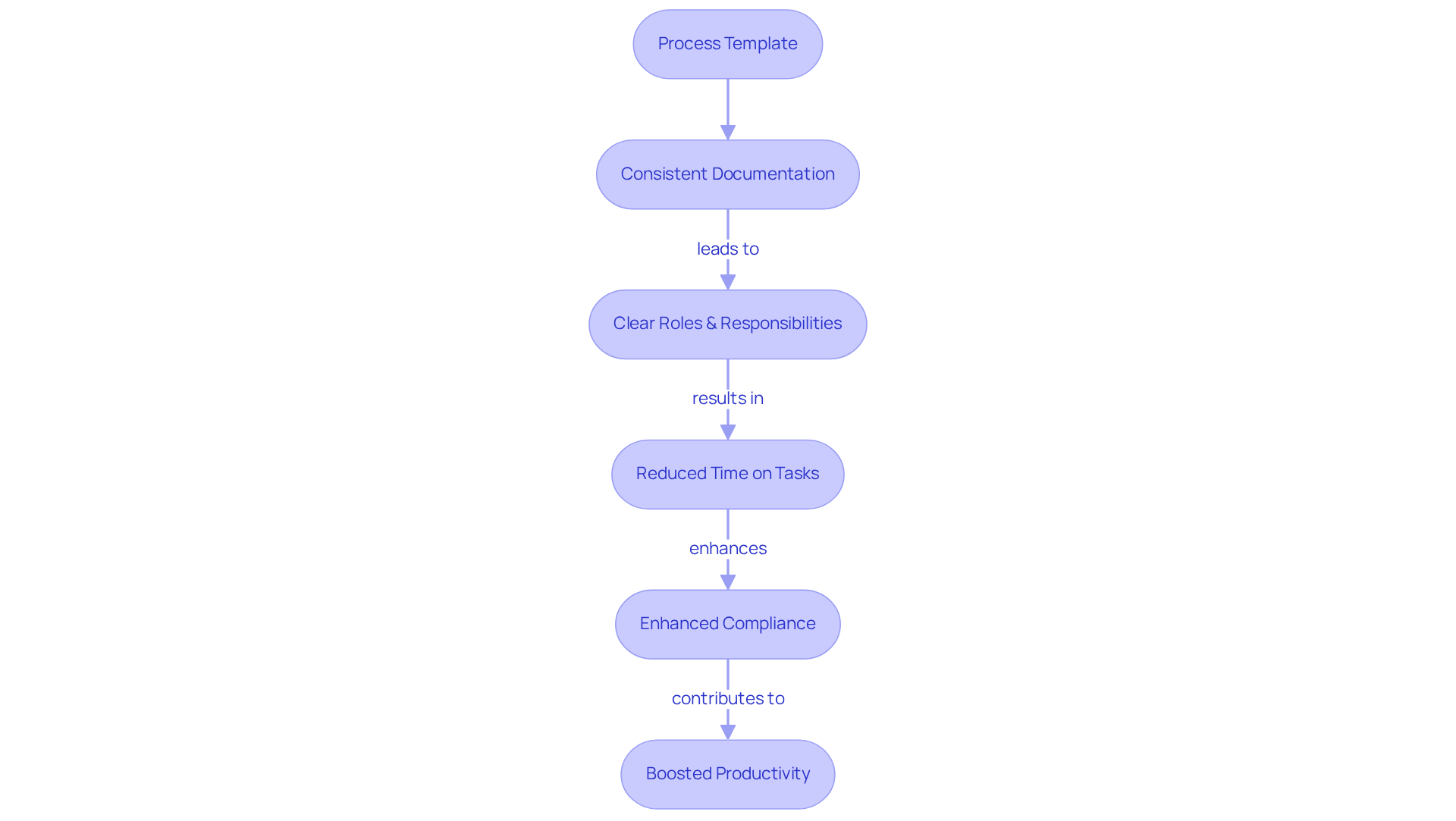
Gather Required Information and Resources
Before you dive into creating your workflow outline, it's super important to gather all the relevant info and resources. You might be wondering where to start—well, take a look at your current documentation and chat with team members who really know the ins and outs of the process. Engaging in interviews or surveys with stakeholders can provide some golden insights that can boost the precision and usefulness of your framework. This thorough understanding of the procedure not only helps you craft a more efficient template but also fosters teamwork, ensuring that every viewpoint is considered.
By putting stakeholder feedback front and center, you can pinpoint key steps, potential roadblocks, and areas that could use a little polish. This ultimately leads to a more organized and efficient record-keeping system. And guess what? With SowFlow's instant record-keeping solution, you can easily tweak your guides and skip those unnecessary meetings, ensuring your team has quick access to the information they need. Now, isn’t that a win-win?
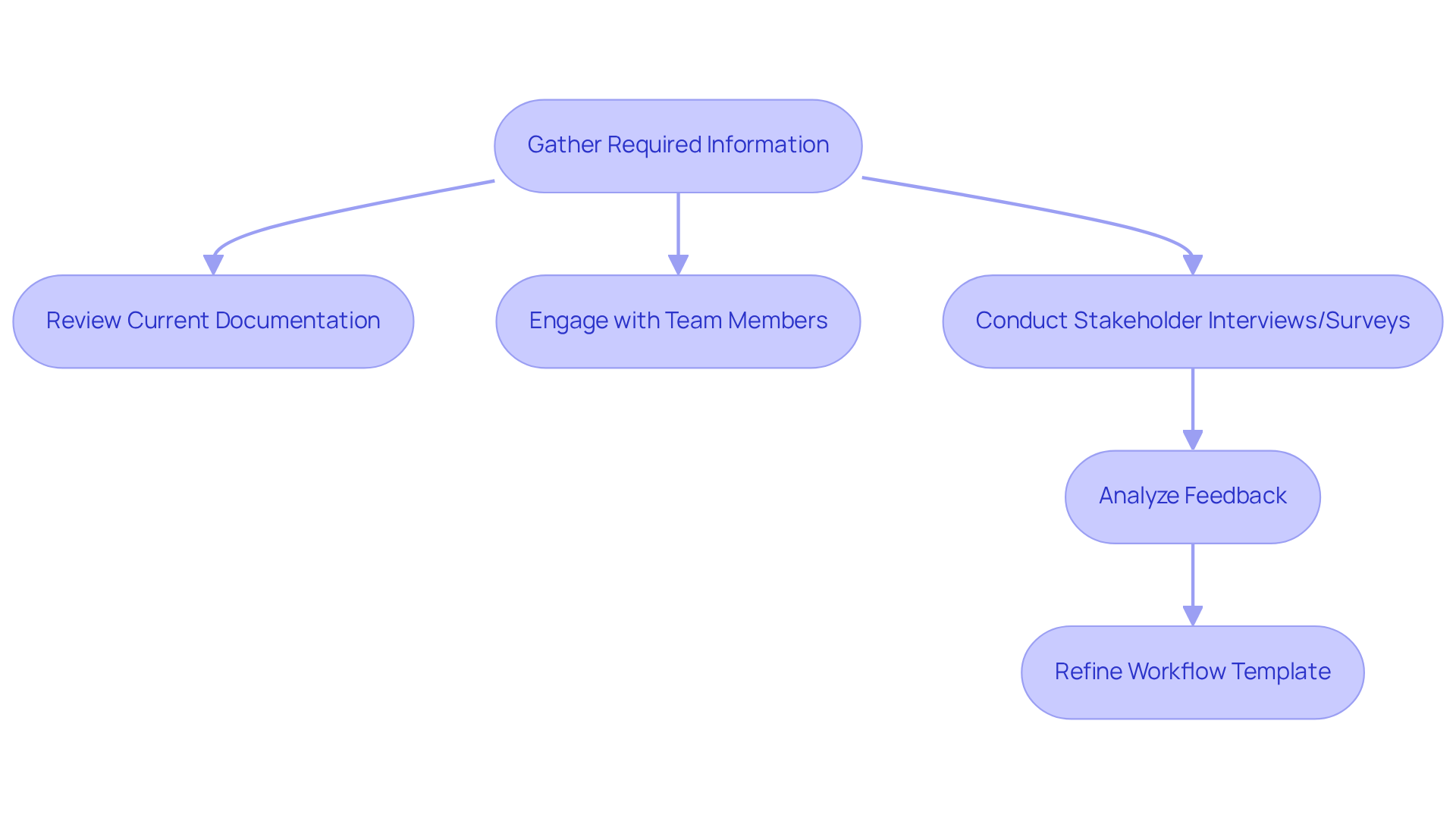
Structure Your Document with Clear Sections
You might be wondering how to make your documentation more efficient. Well, it’s all about organizing your process template word document into separate sections that truly reflect your workflow. Think about including:
- An introduction
- Objectives
- Roles and responsibilities
- Step-by-step instructions
- A conclusion
Using headings and subheadings not only breaks up the text but also makes it easier for your team to scan through and find the info they need quickly.
A well-structured process template word document can significantly boost comprehension and assist everyone in adhering to the processes you've laid out. For example, organizations that clearly section their records often see noticeable improvements in workflow efficiency and team collaboration. Did you know that effective record-keeping strategies can actually reduce financial losses and ramp up productivity? Fortune 500 companies lose about $12 billion each year due to inefficiencies from unstructured document management—yikes!
Now, let’s talk numbers: 91% of data experts agree that poor data quality can hurt company performance. This really highlights how crucial it is to have structured records. By ensuring your records are clear and organized, you can develop a process template word document that fosters a culture of collaboration, significantly enhancing overall performance. Plus, this organized approach helps onboard new employees more smoothly and simplifies workflows, which means less time wasted in meetings and better operational efficiency. And here’s a fun fact: 48% of employees struggle to find documents quickly, underscoring the need for solid record-keeping methods.
With SowFlow's solution, you can easily whip up user guides and workflow templates that are always up-to-date, keeping your materials relevant in today’s fast-paced business world. This means your team can access essential information instantly, tapping into the wisdom of your documentation and cutting down on unnecessary meetings, all while boosting team efficiency.
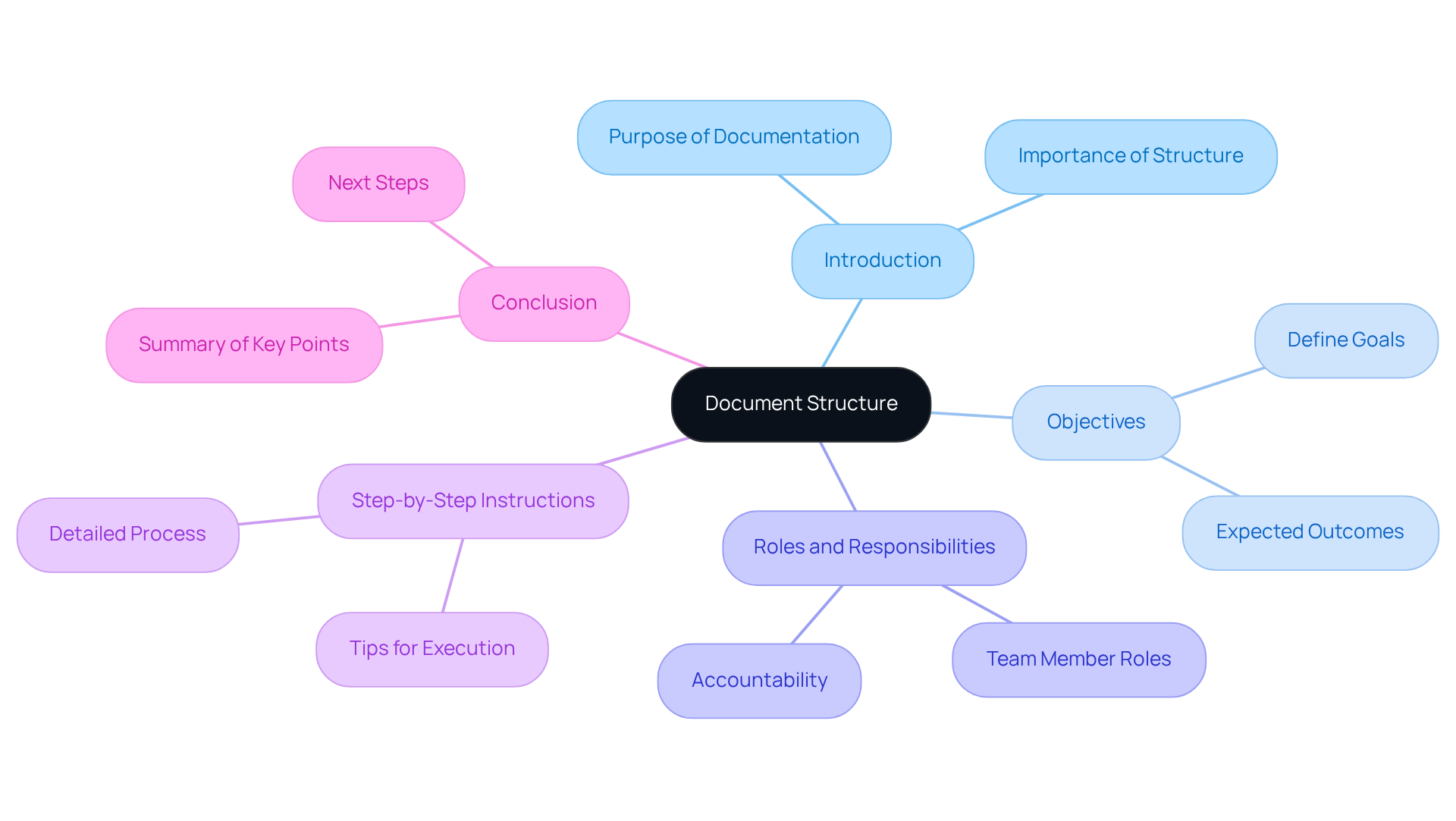
Define Each Step of the Process Clearly
To ensure successful compliance with recorded procedures, it’s super important to define each step clearly. So, how do you create a detailed process template Word document in Word while leveraging SowFlow's solutions for a boost in efficiency? Let’s break it down:
-
Identify the Procedure: First things first, pick the specific procedure you want to document. Make sure to clearly outline its purpose and scope.
- Expected Outcome: You’ll have a focused understanding of what the procedure is all about.
- Tools/Resources: Think about using process mapping tools or maybe even brainstorming sessions.
-
List Required Actions: Next up, break the procedure down into individual actions. Keep each action simple and straightforward.
- Expected Outcome: You’ll end up with a comprehensive list of tasks that need to be completed.
- Tools/Resources: A process template Word document or a spreadsheet works great for this.
-
Define Roles and Responsibilities: Now, specify who’s responsible for each action. This clarity is key for accountability and makes sure everyone knows their part.
- Expected Outcome: You’ll have clear ownership of tasks, which reduces confusion.
- Tools/Resources: Consider using a RACI matrix (Responsible, Accountable, Consulted, Informed).
-
Outline Expected Outcomes: For each action, describe what you expect to achieve. This helps everyone understand why each step is important.
- Expected Outcome: Users will know what success looks like for each action.
- Tools/Resources: Result outlines or examples from similar activities can be really helpful.
-
Include Relevant Tools and Resources: Don’t forget to mention any tools or resources that can help with the actions. This could be software, templates, or guides. By the way, SowFlow’s user-friendly Chrome extension is a fantastic option for documenting workflows efficiently.
- Expected Outcome: Users will have access to the necessary resources, which boosts efficiency.
- Tools/Resources: Links to software or internal resources are handy here.
-
Review and Revise: After you’ve drafted the process, take a moment to review it for clarity and completeness. Getting feedback from team members who will be using the document is crucial. Plus, SowFlow makes it easy to update your documentation to keep it relevant in today’s fast-paced business world.
- Expected Outcome: You’ll end up with a streamlined procedure that’s easy to follow.
- Tools/Resources: Peer review sessions or feedback forms can be really beneficial.
-
Execute and Observe: Finally, once everything’s finalized, put the procedure into action and keep an eye on compliance. Gather information on how well the procedure is being followed and make changes as needed. SowFlow’s solutions can simplify this monitoring system, ensuring you’re always improving.
- Expected Outcome: You’ll see enhanced compliance and be able to spot areas for further enhancement.
- Tools/Resources: Monitoring tools or performance metrics will come in handy here.
By following these steps and tapping into SowFlow's documentation solutions, you can really ramp up compliance. This structured approach not only cuts down on confusion but also nurtures a culture of continuous improvement within your teams.
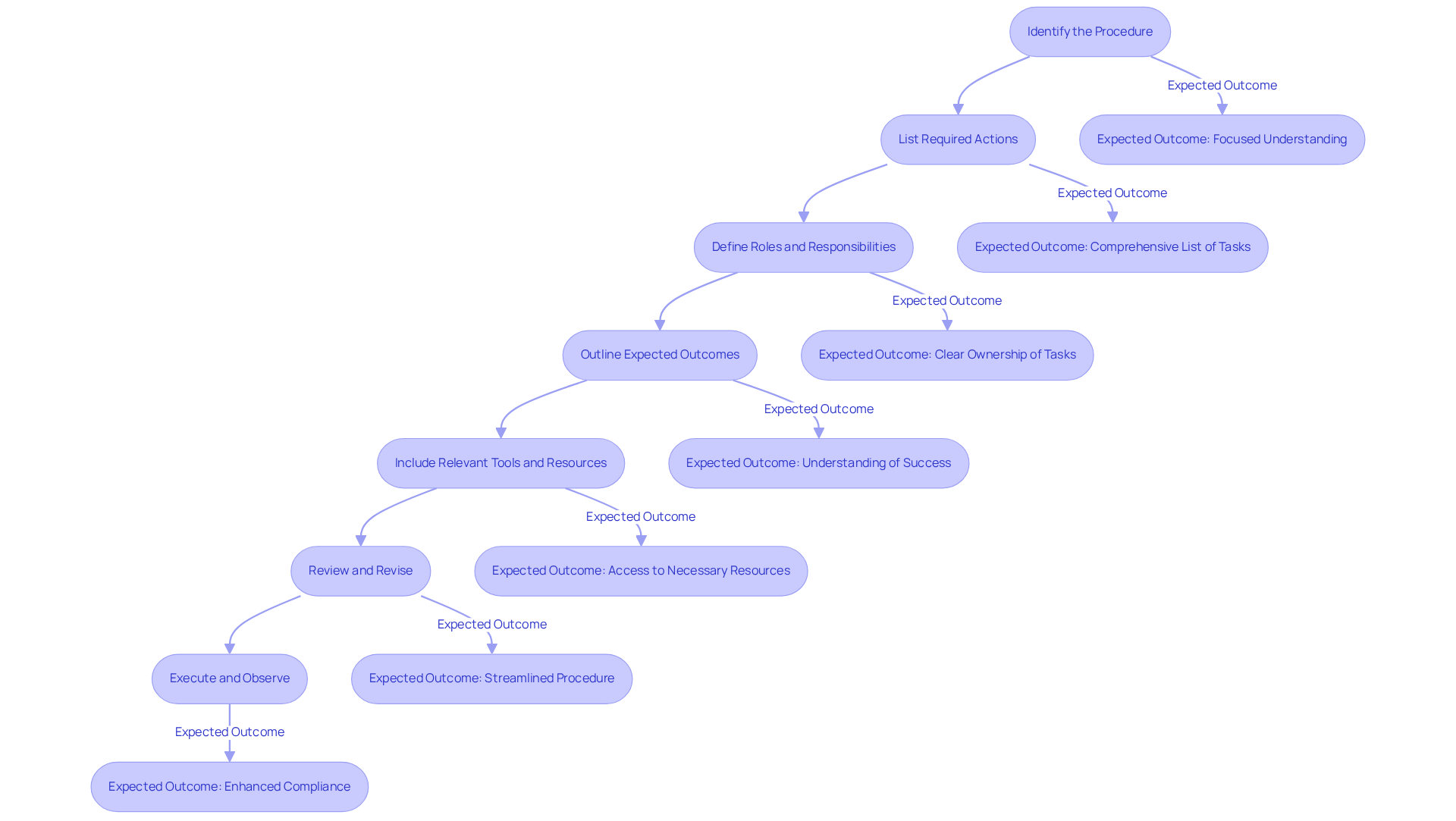
Incorporate Visual Aids for Clarity
You might be wondering how to make your documentation clearer. One great way is to incorporate visual aids like flowcharts, diagrams, screenshots, or infographics. These elements can really help demonstrate intricate procedures and serve as a visual guide for you and your users. Just remember to label your visuals clearly and reference them in the text—this way, users will know exactly how to interpret them. A well-placed visual can significantly boost your understanding of the procedure. So, let’s dive into how you can make the most of these tools!
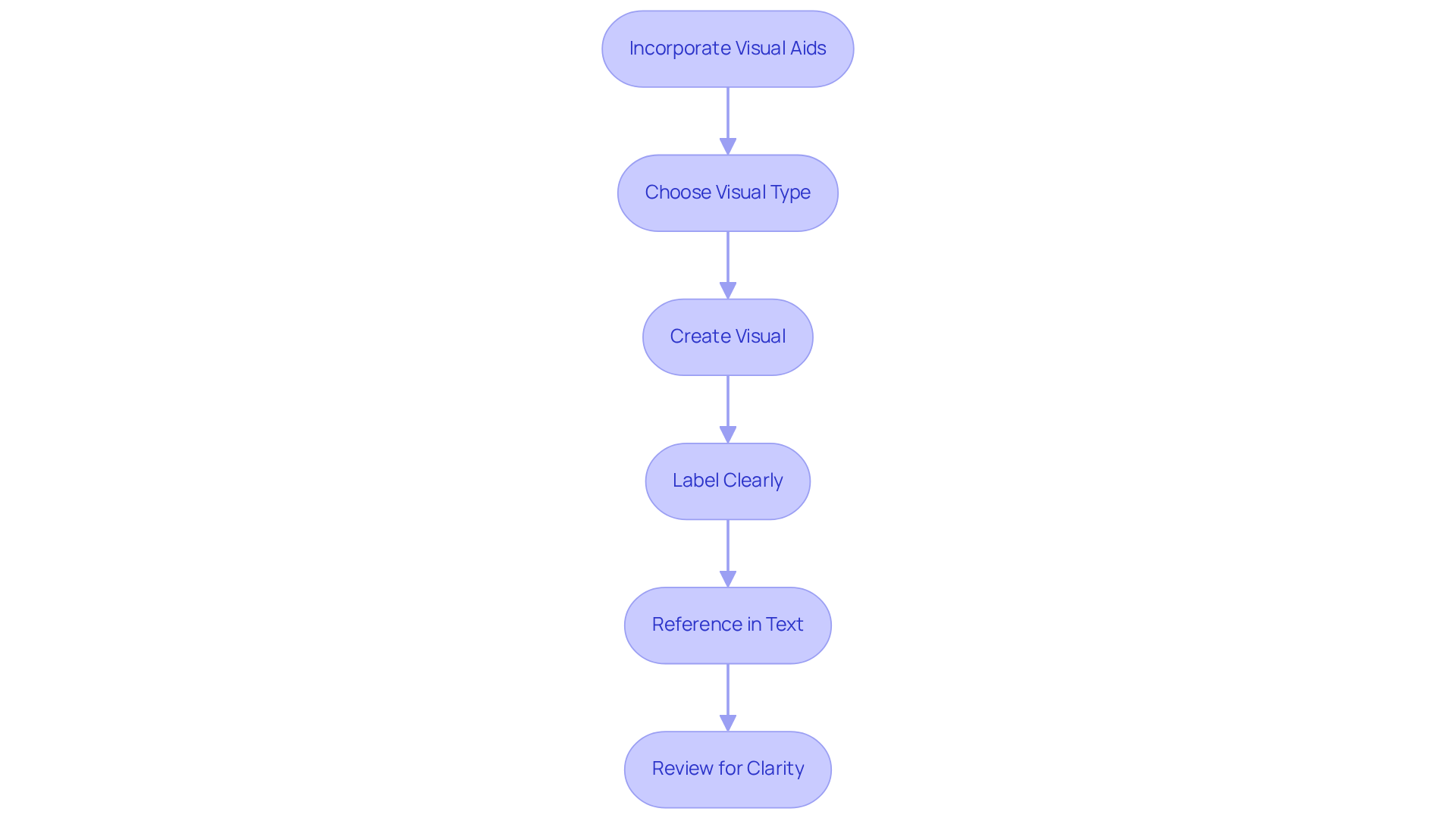
Review and Test the Process Template
After you've created your workflow outline, you might be wondering how to make sure everything is spot on. It’s super important to do a thorough review to ensure precision, clarity, and thoroughness.
Why not involve folks who really know the process? They can help evaluate the framework by following the recorded steps. This collaborative effort not only boosts the quality of your template but also gives everyone a sense of ownership. Research shows that organizations that actively engage their teams in feedback processes see some serious improvements in record quality.
Think about it: constructive feedback can really amp up group performance and morale, leading to a more organized approach to operations. By fostering a culture rich in feedback, teams can easily spot areas for improvement, clarify expectations, and ultimately create more effective records.
So, consistently reviewing and evaluating procedural records with input from your team can totally transform how your organization manages knowledge and operational practices. Now, let’s dive into how you can start implementing this feedback culture!
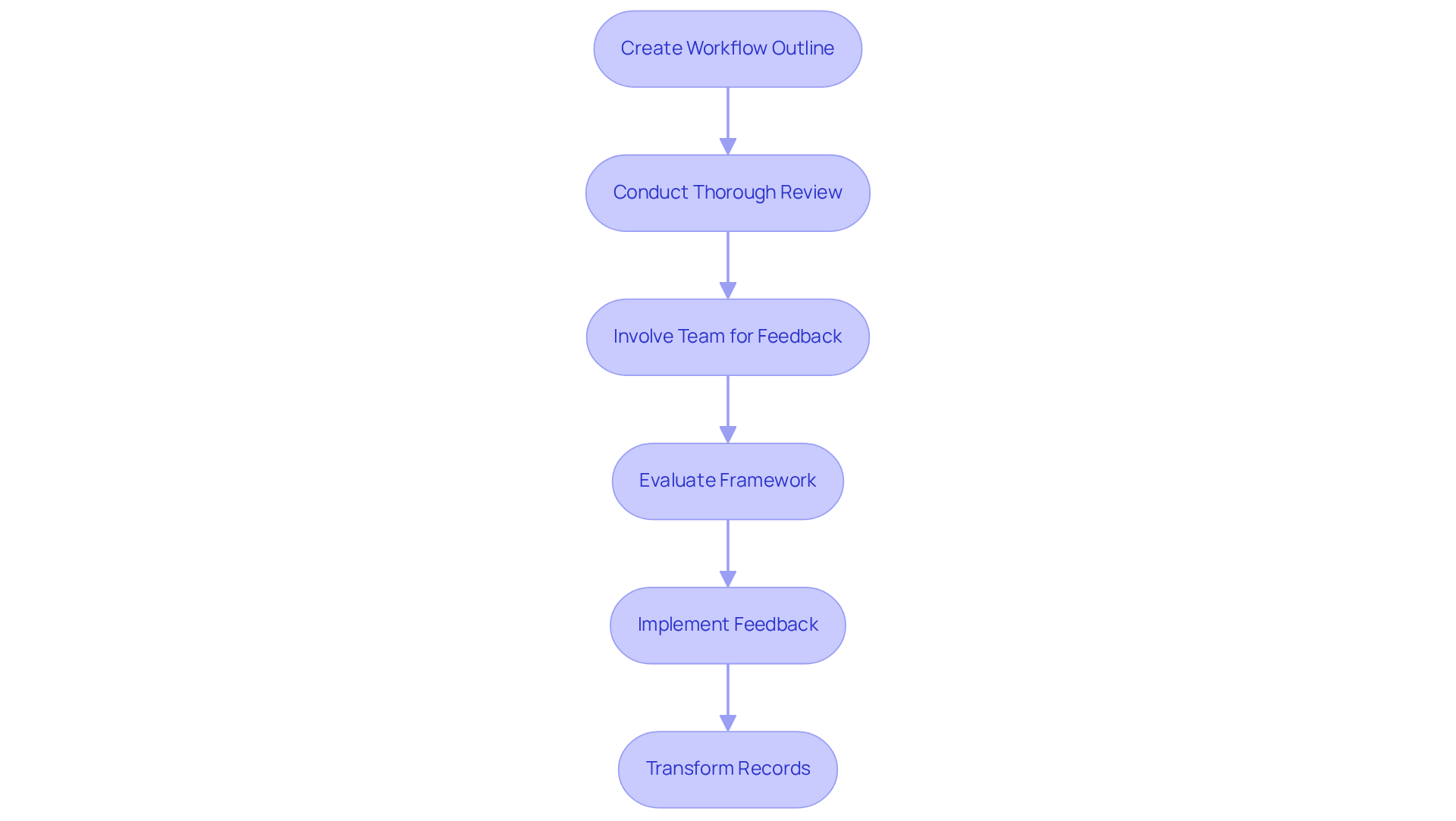
Maintain and Update Your Process Template Regularly
To keep your workflow framework relevant, you might be wondering how to set up a routine for consistent evaluations and tweaks. With SowFlow's user-friendly platform, you can easily whip up user guides and tap into your documentation's knowledge with just one command. This makes it a breeze to keep your formats up to date! Don’t forget to set regular reminders to review your templates, especially after any big changes in workflows or team structures. Involving your team in this process is super important; their insights can highlight necessary updates based on real-world experiences. By regularly maintaining your records, you not only keep them useful but also boost their value as a resource for your organization.
Now, let’s dive into some stats. Research shows that organizations that prioritize record-keeping enjoy greater consistency in execution, which is key for operational success. Chris Pacella from the National Payroll Institute points out that without solid records, staff might start using different working methods, leading to inefficiencies. Plus, companies that make it a habit to regularly update their record-keeping practices—like those offered by SowFlow—tend to adapt better to changes, fostering a culture of continuous improvement.
Successful organizations really illustrate this approach. Take companies that have woven systematic evaluation methods into their record management, similar to what SowFlow offers; they’ve seen significant boosts in operational efficiency and employee onboarding. By treating documentation as a living project—complete with defined tasks and deadlines—and leveraging SowFlow's features, organizations can ensure their process template word document remains relevant and effective in meeting the ever-evolving needs of the business.
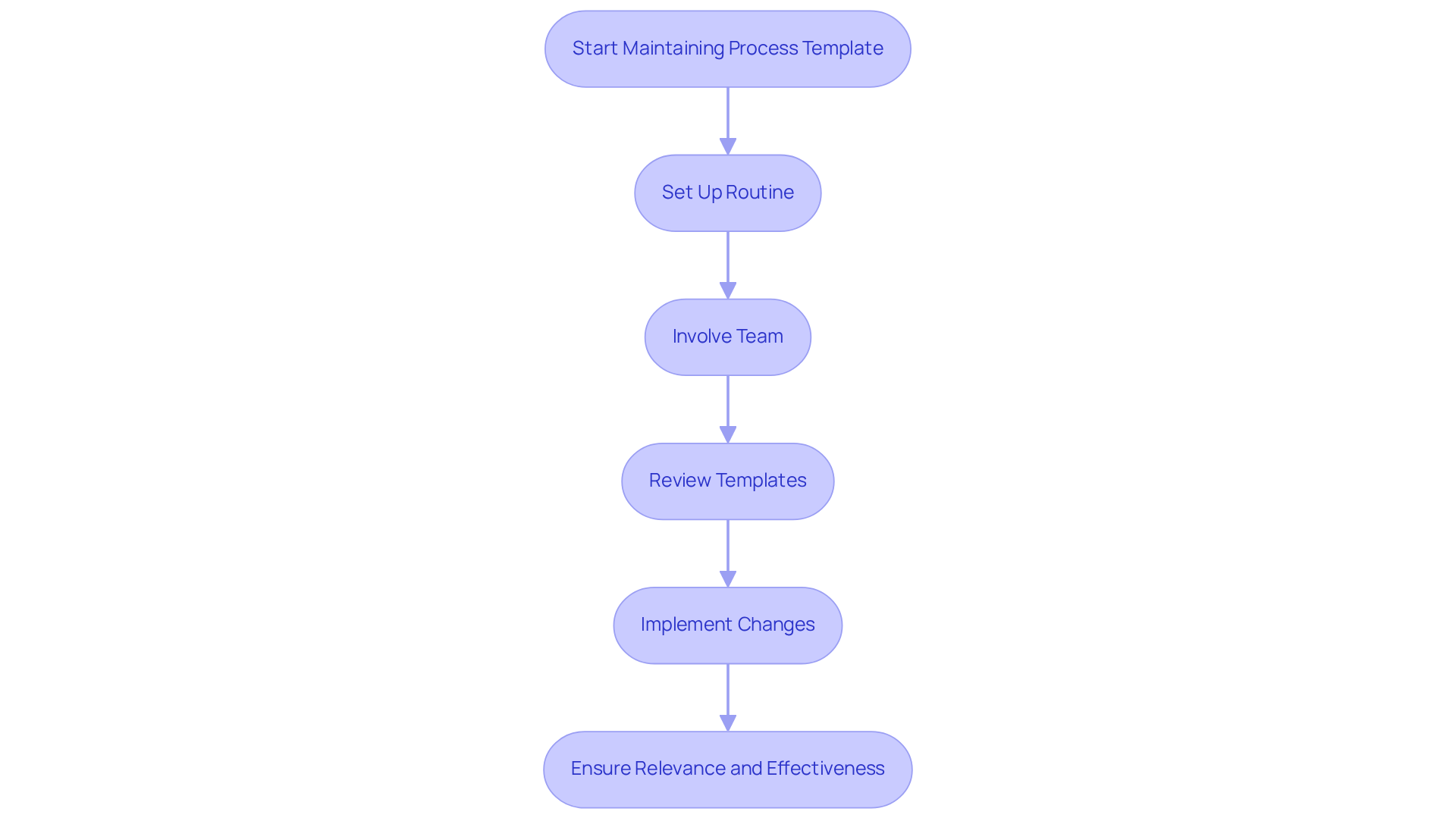
Conclusion
Creating a process template Word document isn’t just about filling in a blank page; it’s about building a solid framework that boosts clarity and efficiency in your organization. You might be wondering how standardizing workflows can help—well, it allows teams to work together more seamlessly, cutting down on confusion and ramping up productivity. When you implement well-structured templates, you’ll notice a significant drop in the time spent on repetitive tasks, which is a win for everyone involved.
Now, let’s talk about the key steps to crafting an effective process template:
- Understand the purpose of your template and gather all the necessary information.
- Clearly define each step and add some visual aids to make a difference.
- Schedule regular reviews and updates to keep your template relevant and effective.
This approach nurtures a culture of continuous improvement and collaboration among your team.
The importance of using process templates can’t be emphasized enough. Embracing this structured approach not only streamlines your operations but also boosts compliance and team performance. So, why not encourage your organization to adopt these practices? Tools like SowFlow can help you maintain up-to-date documentation, making it easier to navigate changes and keep your workflows efficient and aligned with what your team needs as things evolve.
Frequently Asked Questions
What is the purpose of a process template?
A process template serves as a document for documenting workflows, making processes more consistent and clear within an organization. It helps teams understand their roles and responsibilities, reducing time spent on repetitive record-keeping tasks and boosting productivity.
How does using a process template affect productivity?
Organizations that utilize a process template can reduce their time on contract management activities by as much as 50%, leading to increased productivity and efficiency.
Why is defining a clear objective for a workflow framework important?
Defining a clear objective ensures that the workflow aligns with the organization’s specific needs, facilitates smoother knowledge sharing, reduces the chances of errors, and ultimately enhances compliance and operational efficiency.
What steps should be taken before creating a workflow outline?
Before creating a workflow outline, it's important to gather relevant information and resources by reviewing current documentation and consulting with team members who understand the process. Engaging with stakeholders through interviews or surveys can provide valuable insights.
How can stakeholder feedback improve the workflow template?
Stakeholder feedback helps identify key steps, potential roadblocks, and areas needing improvement, resulting in a more organized and efficient record-keeping system.
What advantages does SowFlow's instant record-keeping solution offer?
SowFlow's instant record-keeping solution allows teams to easily adjust their guides and access necessary information quickly, minimizing the need for unnecessary meetings and fostering efficiency.
👍
What others are liking
5 Steps to outline your ideal documentation structure
5 MINS READ
Where to start the your journey of mapping out your ideal documentation structure, aligning it with the very heartbeat of your organization?
Defining a winning level of detail in your process
3 MINS READ
What is too much detail, and what is too little? This article described in that winning level detail about what detail is enough.





